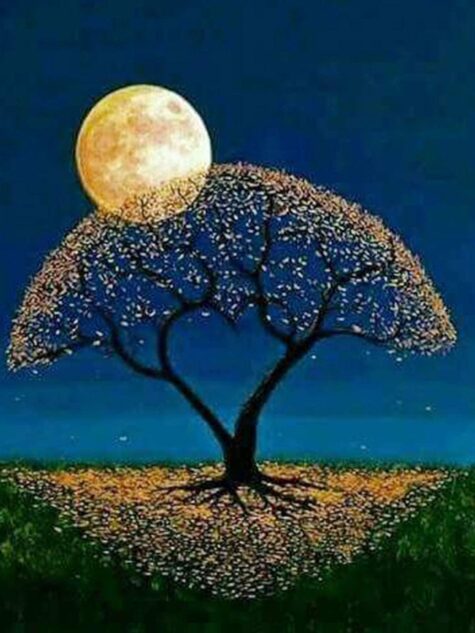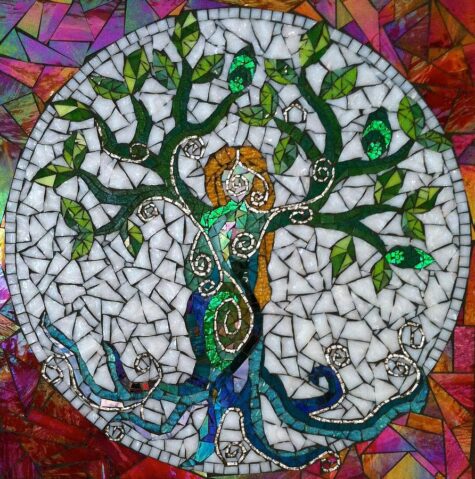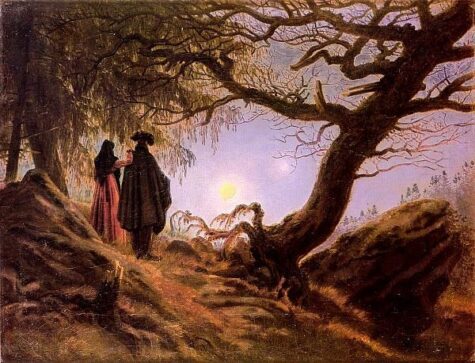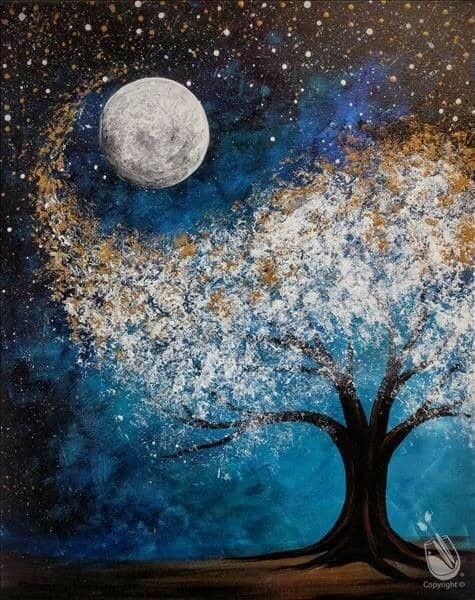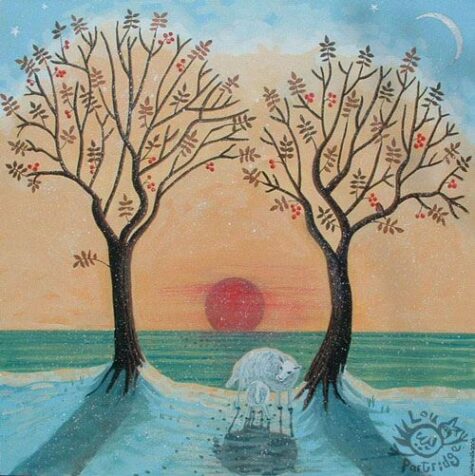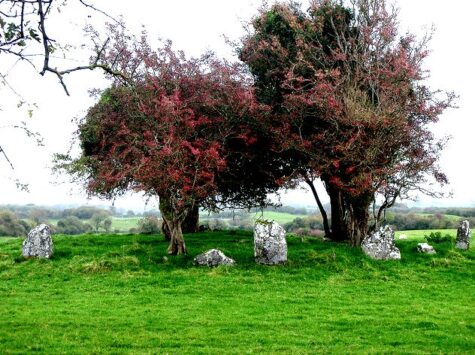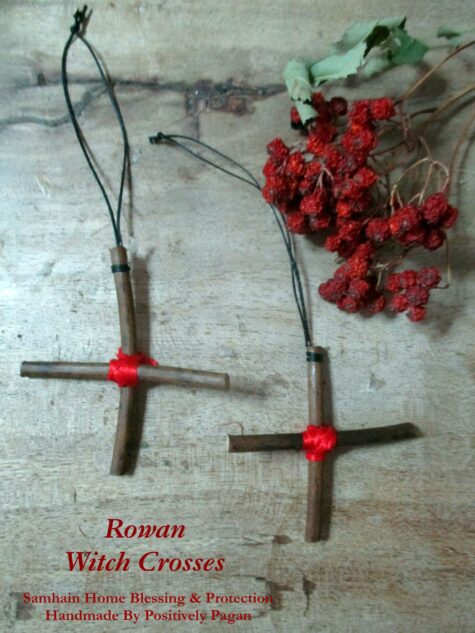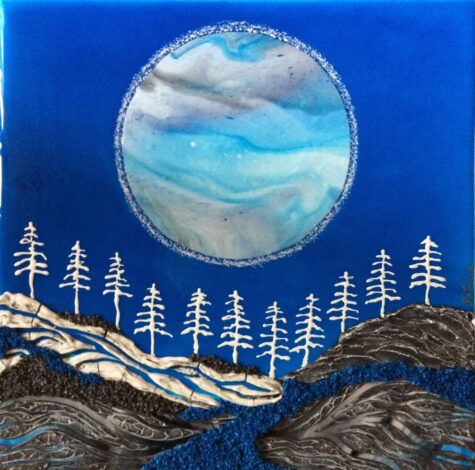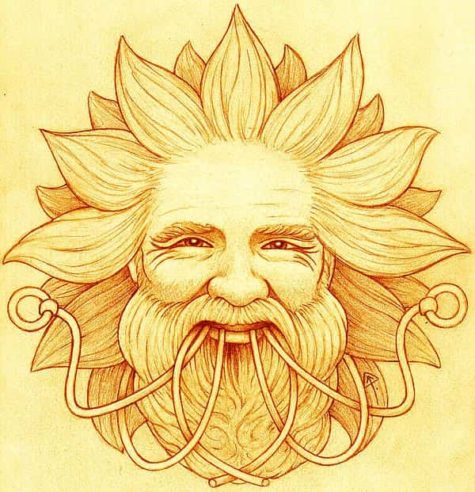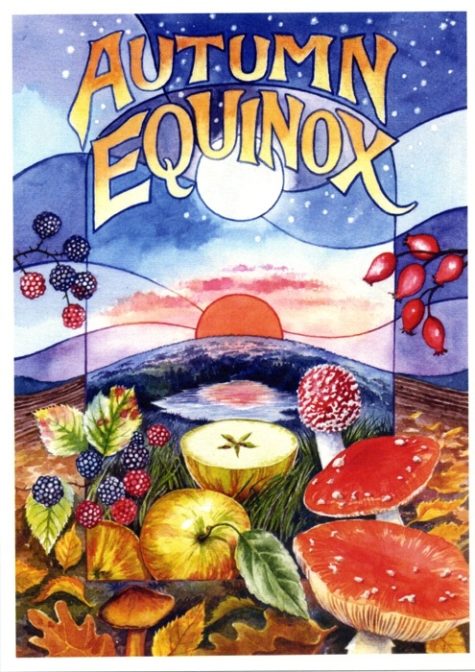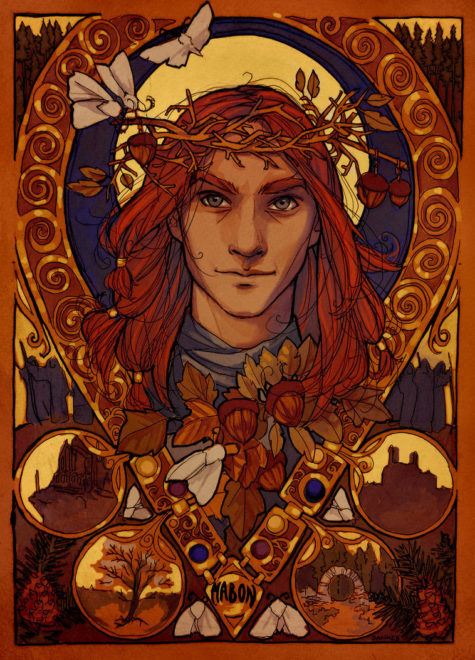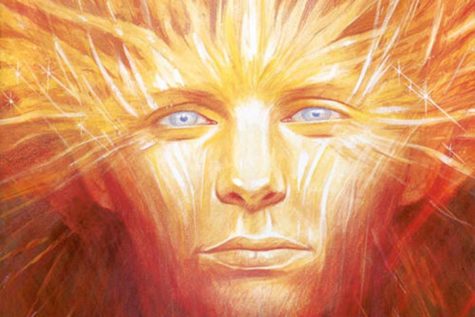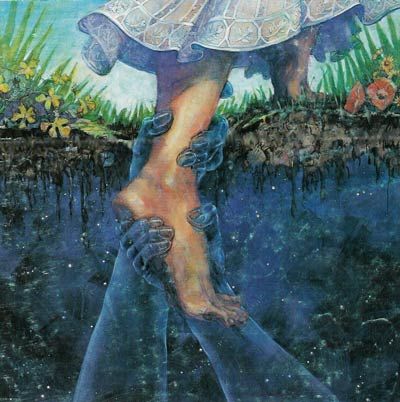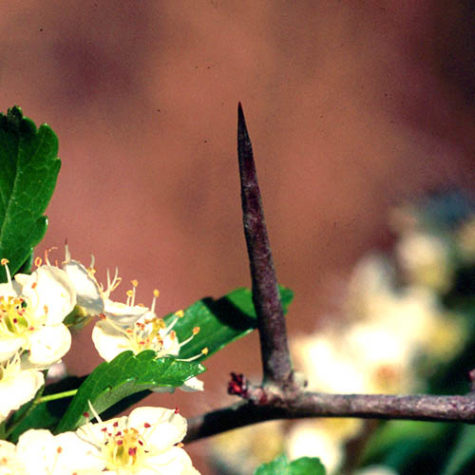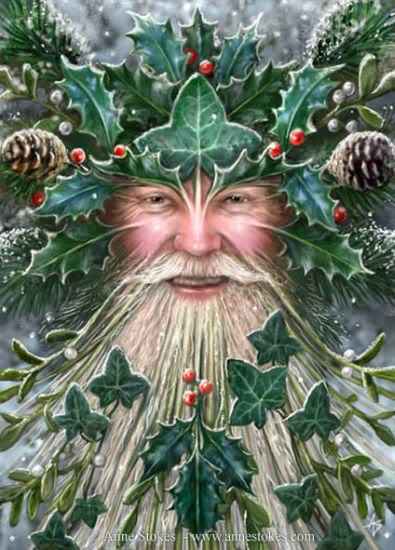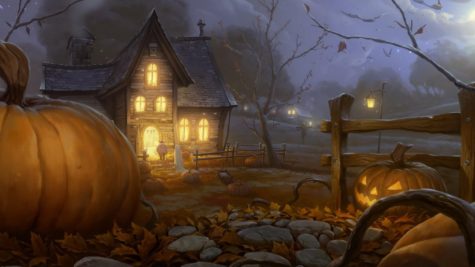Celtic
In ancient Europe, the winter’s ice began to thaw during the Celtic Month of Ash Moon. People ventured out of their homes and villages for the first time since the darkening days of late autumn. It is perhaps for this reason that this month is linked with journeys of all kinds. Energy directed now should focus on transformation, moving you into a new space either physically or spiritually.
The month of the Ash Moon is a good time to start planning your summer holiday and to acclimatize your body to spending time outside. Cast energy forward that takes your inner energies on an excursion by harnessing natural forces, such as floating wishes downstream in a paper boat, or blessing a feather and letting it fly on the wind. Valentine’s Day also occurs near the time of the Ash Moon, so cast love energy that focuses on sharing your journey in the year ahead with someone special.
- Dates: February 18 – March 17
- Irish/Gaelic name: Nuin, Nion
- Themes: Balance, Endurance, Strength, Protection.
- Language of Flowers: Grandeur
- Qualities: Balance, Stability, Strength, Protection, Connection, Vitality, Fertility, Justice, Wisdom, Connection
- Associated With: Prophetic Dreams and Spiritual Journeys.
Ash is one of our mightiest trees. A huge physical specimen when mature, and also a tree with some of the most impressive myth, meaning and folklore around it.
In ancient Europe, Ash trees were enormous, towering high above the landscape with a thick trunk and deep roots. The Celts interpreted three distinct things from this tree, expansion, growth, and higher perspective. The incredibly complex root system also symbolized remaining grounded despite how much growth was taking place in one’s life.
This belief was perfectly aligned with the esoteric message of the ash. The Druids and the Norse peoples believed all the realms were connected via branches of a giant mystical ash tree known as Yggdrasil.
This World Tree, Yggdrassil, was an almighty ash tree that joined together the heavenly realms in its branches, the earthly realms in its trunk, and the realms of the underworld through its roots.
The spear of Odin was made from the branch of this tree, which is also known by the Celtic name Nion, pronounced knee-un. One of three trees sacred to the Druids (Ash, Oak and Thorn), the month of the Ash tree is a good month to do magic that focuses on the inner self and spells that focus on spiritual journeys, and prophetic dreams.
The wood of the ash tree was used extensively in ritual practices as it burned with an intense heat, even when green. The ash was often the Yule log – feted and decorated as it was brought into the home, farmstead, or inn, fed mead or wine and then burnt on the hearth with the charred remains kept as kindling for next year’s Yule log. The ashes of the Yule log were often used to protect the home from lightning.
The most productive magickal tools are made from the branches of the Ash tree. Ash has also historically been used to make staffs or staves. An early Iron Age find on the Isle of Anglesey in Wales was a staff of ash with a ribbon of copper spiraling around it, thought to be a druid’s staff. It’s also the wood traditionally used for witches’ broomstick handles (birch for the brush part).
Ash is very much associated with rain and water, especially with thunderstorms and their associated downpours. Thor, the god of thunder had a spear of ash. It’s thought that the tall height of the ash tree may attract lightning.
A country rhyme tells us:
“Avoid an ash,
for it courts a flash”
While its association with wet weather is recognized in the old weather lore:
“Ash before the oak,
We shall surely get a soak,
Oak before the ash,
We shall only get a splash”
The Greek god of the sea and storms, Poseidon, was also associated with the ash tree. The Norns watered and tended to the tree and covered its bark with clay to protect it. They also gave the (burnt) fruit of the tree to women in childbirth and so it is associated with childbirth as well.
The ash tree is about balance and stability. Its roots grow to the same size as its branches which means the tree is very stable and grounded with a good inner balance. As the World Tree, it provides balance between the earthly realm, the heavens, and the underworld.
Ash provides strength, endurance, and protects what we hold dear. It is justice, protection, and healing. It is life-giving rain and fertility in spring.
Ash the Enchanter
Free thinkers are born under the Ash Celtic tree astrology sign. They possess vivid imagination, intuition and their second nature is to be artists. They can see the world crystal clear, but have the tendency to be moody and withdrawn at times. Don’t think that they have some sort of a bipolar disorder. It’s all due to the fact that their inner world is constantly moving and changing.
These enchanters from the Ash sign are drawn towards art, writing, spiritual matters, and even science. Good partners for this Celtic tree astrology sign are the Willow and Reed signs.
Walking meditation
Practicing this technique during the Ash Moon will free your mind from stress and attract solutions to your problems. You will need a smudge stick, a bunch of herbs – usually white sage – that is used to ‘smudge’ or cleanse an area with smoke.
Light a smudge stick, then take time to relax and breathe deeply. Direct the smoke around your body, taking time to cleanse your aura, and say,
“Spirit I walk this journey and invite you to join me.
May each step be sacred.”
Set out on a walk that takes you through nature. Everything on your journey has a message for you, so relax and enjoy it.
On your return write down any animals you encountered and unusual sights or flashes of inspiration you received.
Sources:
This point in the agricultural calendar is marked by the ploughing of the soil to allow it to prepare for the seed, and any energy work performed now is all about groundwork. The surface of the earth appears barren, but the life force is stirring beneath. Ask yourself what you need to prepare in order to plant the seeds of your dreams this year.
The Celtic fire festival of Imbolc (2 February) falls in the Rowan Moon, lending this time associations with the goddess Brigid to whom the festivities are dedicated. This is the perfect time to perform initiations and for spells of power and success.
- Dates: January 21 thru February 17
- Celtic Name: Luis
- Language of Flowers: Prudence
- Qualities: protection, magical, healing, light, spring,
- Color: White
- Themes: Hearth and Home, Family, Personal Power, Spirituality, Success, Protection.
Known as the Bride, Brigid represents the mother of the new-born Sun and all candle energy work is sacred to her. Like the snowdrops peeking out of the ground to meet the goddess, white is a powerful symbol during this month.
During the Rowan Moon wear white to cast energy, use white candles and feast on white foods to attune to the season. Begin spring cleaning now. As the light increases, you will need to clear out your clutter with all your energy to make way for new growth. Have a Rowan Moon dinner party and ask your guests to wear white, dine by candlelight and eat seeds such as beans, pulses and nuts.
Look for the first snowdrops of the season and make a wish when you see one. Snowdrops hold the potential of spring. Tie a white ribbon on a rowan tree while saying the names of those you love. The tree will send out healing vibrations to them.
Known by the Celts as Luis (pronounced loush), the Rowan is associated with astral travel, personal power, and success. A charm carved into a bit of a Rowan twig will protect the wearer from harm. The Norsemen were known to have used Rowan branches as rune staves of protection. In some countries, Rowan is planted in graveyards to prevent the dead from lingering around too long.
Rowan the Thinker
Rowan is the philosophical sign of the Celtic zodiac. People born under this Celtic tree astrology sign tend to be keen-minded visionaries, with creative thoughts and high ideals. They tend to be aloof and often feel like other people don’t understand them. However, the Rowan signs are full of energy and devotion and are passionate when it comes to persuasion. The Rowan from the Celtic tree horoscope is compatible with the Ivy and Hawthorn signs.
The rowan tree is known for balance, clarity, vision, protection, divination, and transformation. For those who believe that the trees speak to us when we listen with complete silence, the rowan tree whispers encouragement to look deeper, look beyond the focus of your worldly eyesight to go beyond the physical world and engage with worlds beyond that which we are comfortable with.
Another amazing lesson to be found in the rowan tree comes from observing where they grow and how determined they are to survive, even at times sprouting up within other trees. Some see this as an analogy for us to find connections in unexpected places.
Rowan Magick and Lore
The beautiful rowan is one of our most beautiful and colorful trees – with frothy white blossoms in spring, delicate feathered leaves, and colorful red autumn berries. It’s also traditionally considered as one of most magical trees!
The Druids believed the rowan tree contained a spirit that had secret knowledge of immortality and personal freedom. In Norse mythical tales, it’s said that the rowan saved the life of the god Thor as he was being swept away in the river Vimur – he caught hold of a rowan tree on the bank and pulled himself to safety.
In ancient Celtic mythology, rowan was considered as the mythical ‘tree of life’ – the tree of life bears life-giving fruit each month and at the quarter of the year. The magical berries of the tree could sustain, heal, and prolong life.
Icelandic myth gives the rowan tree a connection with light – there, the rowan is a tree of the winter solstice. The frost glistening on midwinter rowan trees in moonlight fills these magical trees with tiny stars and links to ancient traditions of magical ‘moon trees’ decorated with lights (stars). The star-lights in the rowan bring the light energy of the spirit of the returning year in that important solstice moment of darkness as the year turns from darkening to lightening.
The traditions tell of a special star glowing atop the rowan tree – an ancient rite that’s surely influences our modern tradition for topping our own winter solstice trees (Christmas trees) with a star.
A Rowan Witch Cross
This protection charm represents the waxing energies of the Sun and can be hung in the home to attract good luck.
Collect together two straight sticks of rowan wood. Remember to leave an offering of thanks on a breach, such as a strand of hair, or thread or ribbon.
Hold the sticks in a cross and say,
“Spirits of this wood,
I bring you together for the good of all.”
Now bind the sticks into an equal-armed cross and secure them with red thread. As you do this visualize a powerful white light.
Hold the charm up to the Sun and say:
“Behold the Wheel of Brighid,
Blessed be.”
Sources:
The first of the 13 tree months of the Celtic calendar is the month of the Birch Moon. It begins just after Yuletide, and runs through most of January.
Starting just after the Winter Solstice – the shortest day of the year – the month of the Birch Moon marks the period of the year when the hours of daylight start to increase over the hours of darkness. Its associated color is flame red. From this comes the red candles that we burn at Yuletide. The birch is a popular Yule log, clearing the Old Year away to make way for the new.
- Dates: December 24 thru January 20
- Celtic Name: Beith, Beth
- Language of Flowers: Meekness
- Color: Red
- Themes: New Endeavors, Creativity, Fertility, Healing, Protection.
The Birch Moon is a time of rebirth and regeneration. As the Solstice passes, it is time to look towards the light once more. When a forested area burns, Birch is the first tree to grow back. The Celtic name for this month is Beth, pronounced beh.
Workings done in this month add momentum and a bit of extra “oomph” to new endeavors. The Birch is also associated with magick done for creativity and fertility, as well as healing and protection. Tie a red ribbon around the trunk of a Birch tree to ward off negative energy. Hang Birch twigs over a cradle to protect a newborn from psychic harm. Use Birch bark as magical parchment to keep writings safe.
Beth, the Birch month, is a time of regeneration and new projects. This is the perfect time to go back to the light once more as the Sun makes a comeback. The Birch tree is the first tree to grow back after a forest fire. This month is the best for spells related to creativity, healing, protection, and fertility.
Birch the Achiever
If you were born in the month of the birch, you probably have a fresh and unusual outlook on life. People born under this Celtic tree astrology sign tend to be highly driven and are always full of zeal and ambition. They always want more and try to reach new horizons and expand their knowledge.
Some of the characteristics attributed to the Birch sign are tolerance, toughness, and leadership. The Birch signs can brighten a room with their smile and quickly charm other people. This sign of the Celtic zodiac is compatible with the Vine and Willow signs.
Throughout history the birch tree was known for it’s adaptability, sustaining itself in even the harshest of conditions. It is the first tree to sprout leaves after the winter and the first to regrow after fire or other natural disaster. Some liken it to the pioneer spirit, courageously taking root in harsh and unknown lands. It is a symbol of renewal at the highest level and demonstrates a fierce and unfailing ability to not only survive, but also to prosper and multiply.
People born under this Druid zodiac sign may exhibit many of the characteristics of the tree such as strength, tenacity, resilience, stability and perseverance.
Birch Magick and Lore
Birch is one of our most beautiful native British trees and one of the most mystical! Birch is often seen as a ‘pioneer tree.’ It was the first tree to start to recolonize the land after the last Ice Age and is, even now, often the first to start to grow on cleared lands or wastelands…
And it provides nourishment for the plants and trees that come after to allow the natural ecosystem to regrow. Because of this, birch is often associated with renewal and new beginnings.
In the Tartar culture, the birch tree stands at the centre of the world. The Siberian Buryat people name birch ‘the guardian of the door’ and believe that the birch can provide access to the nine great celestial realms.
The Siberian Yakut culture associate the birch with ‘Ai Toyou’ the ‘bringer of light’ who lives in a birch tree with its branches filled with nests of children.
The association of birch with light is a powerful one – the beautiful silver-white bark reflects light and appears particularly striking and ethereal by moonlight, especially on those dark winter nights when the trees stand bare of leaves.
Birch is associated with the Celtic god of light, Lugh. And legend tells that birch – ‘beith’ – was the first letter of the Celtic tree alphabet – the ogham – ever written. The letter ‘beith’ was carved seven times onto a piece of birch by the god Ogma so that he could warn the god Lugh that his wife had been taken by fairies. It also served as a protective talisman for Lugh as he sought for his wife.
In the Celtic world, birch trees are also associated with the Northern Lights, the Aurora Borealis – you can imagine the ethereal beauty of the scene with these dancing lights reflected in the silver birch bark – and through this association, with the Celtic goddess Arianrhod who has her throne in the ‘corona borealis’, ‘the crown of the north wind’. Celtic women are thought to have traditionally used birch to ask for Arianrhod’s assistance in childbirth (a time of new beginnings).
Simple Cold Moon ritual
Light a white candle beside a small bowl of natural spring water. Stand over the water and pray for the strength to let go of your vice. Write down your negative behavior nine times on a piece of paper. Fold up the paper, place it inside a freezer bag, and pour in some of the prayer water. Place the bag inside your icebox to ‘freeze’ your bad habits – putting them behind you forever.
Sources:
Belenus, whose name means “Bright One,” was one of the most ancient of Celtic gods. The Celtic fire festival, held on the eve of the first of May, known as Beltane, (the fires of Bel) is probably derived from the name of this deity. Beltane fires were lit to encourage the sun’s warmth. These fires also had restorative properties and cattle were herded between them before being loosed on the new spring pastures.
Closely connected to the Druids, ruler of science, healing, hot springs, fire, success, prosperity, purification, crops, vegetation, fertility. It is likely that Belenus (Bel, or Beli) was a fire deity, a patron of flame and the sun’s restorative powers (which explains his classical association with Apollo). Originally he may have been a pastoral deity and in Cymric myth is associated with cattle, sheep and crops. Though this may be because Beltane was the time that herds were moved to the high pastures.
The Celtic god of light and healing, “Bel” means “shining one,” or in Irish Gaelic, the name “bile” translates to “sacred tree.” It is thought that the waters of Danu, the Irish All-Mother goddess, fed the oak and produced their son, The Dagda. As the Welsh Beli, he is the father of Arianrhod by Don.
Patron of sheep and cattle, Bel’s festival is Beltane, one of two main Celtic fire festivals. Beltane celebrates the return of life and fertility to the world — marking the beginning of Summer and the growing season.
Taking place on April 30 (May Eve) and in some areas on May 1, Beltane also is sometimes referred to as “Cetsamhain” which means “opposite Samhain.” The word “Beltaine” literally means “bright” or “brilliant fire,” and refers to the bonfire lit by a presiding Druid in honor of Bile.
Found at: Encyclopedia Mythica
Autumn Equinox refers to a time of the year when day and night are equally balanced. The dates vary slightly, falling between Sept 21 and Sept 23. The sun is in the process of crossing the equator and in astrological terms is entering the sign of Libra.
The sun is the focal point of energy (along with the moon) and such; its life force pushes us to discover more about ourselves. This movement into the Libra puts a congenial, cooperative outlook on that time of year, just what was needed by the communities, as they all worked together to complete the harvest.
Other names for the Autumnal Equinox include:
- Alban Elfed
- Cornucopia
- Equinozio di Autunno
- Fall Equinox
- Feast of Avalon
- Festival of Dionysus
- Festival of Strong Will
- Harvest Home
- Second Harvest Festival
- Wine Harvest
- Winter Finding
Harvest Home is an Anglo-Celtic version of the original Mabon, and fell in-between the First (Lugnasadh) and the Third (Samhain) Harvests. Harvests festivals were a very important part of the pre- industrialized culture. It was a time of relief and of rest. Relief that the crops were in and rest to catch their breath before the work of preparing for winter began. This was a time to give thanks.
- Color of the day: Yellow
- Incense of the day: Coriander
Once again the Sun’s path crosses the celestial equator, and the day and the night are now again of equal length. On the Gregorian calendar this is the first day of autumn, but on the modern Celtic calendar it is midautumn.
Autumn Equinox in Welsh Mythology
This holiday is more commonly known by its Welsh name Mabon. Mabon means “divine youth.” It is the name of a mythic hunter hero whose story is told at this time of year. At the beginning of time, Mabon was born to the mother goddess Modron. That we only know his mother and not his father attests to the matriarchal lineage of the early Celts.
The equinox marks the time when Mabon was three nights old and stolen from his crib. For the next three months, the heroes Cai and Bedwyr will search for him and ask all manner of birds and beasts for help. But, according to legend, it is only the salmon who can give them direction. On Yule, the heroes retrieve the divine child by freeing him from a prison in Gloucester.
Like Apollo, Mabon is a hunter with a bow and a musician with a harp. He is a Sun god. Mabon represents the Sun that is waning in strength during this quarter of the year and that will begin to return only after the solstice. The waning of the light is frightening and depressing, and it is necessary for our own sake to use magic at this time to help in the quest for Mabon.
The strongest act of magic that one can do at this time is to participate in the celebrations of the yearly cycle. As one integrates the yearly cycle deep into one’s unconscious, serenity and confidence are gained. This is the peace that comes from knowing and accepting that the light will return when it is time.
Autumn Equinox in Celtic Mythology
In this variation of the legend of the Autumn Equinox, this is the day of the year when the god of light, Lugh, is defeated by the god of darkness, Lugh’s twin and alter-ego, Tanist. The night conquers day.
The tales state that the Equinox is the only day which Lugh is vulnerable and the possibility of his defeat exists. Lugh stands on the balance (Autumn Equinox-Libra) with one foot on the goat (Winter Solstice-Capricorn) and the other on the cauldron (Summer Solstice-Cancer). He is betrayed by Blodeuwedd, the Virgin (Virgo) and transformed into an Eagle (Scorpio).
Two events occur rapidly with Lugh’s defeat. Tanist, having beaten Lugh, now takes over Lugh’s place both as King of our world and lover to the Goddess Tailltiu. Although Tanist now sits on Lugh’s throne, his official induction does not take place for another six weeks at Samhain, the beginning of Winter, when he becomes the Dark King, the Winter Lord, the Lord of Misrule. He mates with Tailltiu, who conceives, and will give birth nine months later (at the Summer Solstice) to her son, another incarnation of Tanist himself, the Dark Child.
Lugh’s sacrifice represents not only the sun’s dying power, but also the cycle of rebirth, his energy remaining within the corn we have since harvested. A incarnate (of Lugh) corn spirit was thought to specifically reside within the last stalk (or stock), which was traditionally dressed in fine clothes and decorations, or woven into a wicker man-shaped form. This symbolic decoration was then harvested and carried from the field to be burned with rejoicing for the spirits release and Lugh’s upcoming rebirth.
The Autumn Equinox in Greek Mythology
In Greek mythology, Autumn begins as Persephone returns to the Underworld to live with Hades, her husband.
In short, the myth says that Demeter’s daughter, Kore, had taken a day to pick flowers in a meadow when the Earth opened up, and Hades pulled the girl into the Underworld to become his bride. Kore’s name became Persephone when she married Hades.
For nine straight days, Demeter searched for Kore, with no success. In misery and despiration, Demeter questioned Helios, the Sun God, who informed her that her brother, Zeus, had given the girl to Hades. Furious, Demeter left Olympus to roam the Earth disguised as an old woman, ending up settled in her temple at Eleusis.
Soon after, she cursed the Earth so it would yield no crops. Zues sent her a frantic message inquiring as to why she had prevented growth on the planet. She replied that there would be no regeneration of vegetation on the Earth until her daughter, Kore, was safely returned.
Zeus immediately dispatched Hermes into the Underworld to retrieve the girl. Hades, not wanting to relinquish his bride permanently, convinced Persephone to eat some pomegranate seeds before she returned to her mother, Demeter. Demeter was yet again distraught when she learned of this trickery! Finally, Zeus declared that Kore-Persephone would live with her mother during one half of the year and return to her husband, Hades, during the other half. In thanks, Demeter lifted the curse on the Earth, creating Spring. Every year hence, during her time of greatest sorrow, Demeter renews the curse, as her daughter returns to Hades and the Underworld.
Sources:
- Ravenna’s Wheel of the Year
- Widdershins
- Gordon Ireland
- Llewellyn’s Spell A Day
Although Midsummer Day occurs at the summer solstice, or what we think of as the beginning of summer, to the farmer it is the midpoint of the growing season, halfway between planting and harvesting, and an occasion for celebration.
The most common other names for this holiday are the Summer Solstice or Midsummer, and it celebrates the arrival of Summer, when the hours of daylight are longest. The Sun is now at the highest point before beginning its slide into darkness.
Celebrating Midsummer Day
Although it’s also the feast day of St. John the Baptist, it features pagan traditions such as bonfires, fire walking, and a carnival atmosphere, all of which took place on Midsummer Eve. Certainly, it’s a night of magic and soothsaying as well, for as Washington Irving said, this is a time “when it is well known all kinds of ghosts, goblins, and fairies become visible and walk abroad.” After Midsummer Day, the days shorten.
In Sweden and Norway at the Solstice, people made wheels of fortune. Some of the wheels were wrapped in straw, set on fire, and rolled down hill. Other wheels were decorated and kept. These were used in two ways: One, the wheel was rolled away from a person to take away misfortunes; two, it was rolled toward a person to bring all kinds of good fortune.
Variations on the Midsummer celebrations:
People around the world have observed spiritual and religious seasonal days of celebration during the month of June. Most have been religious holy days which are linked in some way to the summer solstice.
- Scottish Pecti-Witans celebrate Feill-Sheathain on July 5th.
- In the Italian tradition of Aridian Strega, this Sabbat (Strega Witches call them Treguendas rather than Sabbats) is known as Summer Fest – La Festa dell’Estate.
- Scandinavians celebrate this holiday at a later date and call it Thing-Tide.
- In England, June 21st is “The Day of Cerridwen and Her Cauldron”.
- In Ireland, this day is dedicated to the faery goddess Aine of Knockaine.
- June 21st is “The Day of the Green Man” in Northern Europe.
In Lithuanian tradition, the dew on Midsummer Day was said to make young girls beautiful and old people look younger. It was also thought that walking barefoot in the dew would keep one’s skin from getting chapped.
It was customary to honor all men named John on this day by fixing wreaths of oak leaves around their doors. This is usually done in secret, and John must guess who did it or catch the person in the act, in which case he must give the person a treat.
Midsummer Celebrations in Ancient Times:
The solstice itself has remained a special moment of the annual cycle of the year since Neolithic times. The concentration of the observance is not on the day as we reckon it, commencing at midnight or at dawn, but the pre-Christian beginning of the day, which falls on the previous eve. Other names for this time in the Wheel of the Year include:
- Alban Heruin (Caledonii or the Druids)
- Alban Hefin (Anglo-Saxon Tradition)
- Sun Blessing, Gathering Day (Welsh)
- Whit Sunday, Whitsuntide (Old English)
- Vestalia (Ancient Roman)
- Feast of Epona (Ancient Gaulish)
- All-Couple’s Day (Greek)
Ancient Celts: Druids, the priestly/professional/diplomatic corps in Celtic countries, celebrated Alban Heruin (“Light of the Shore”). It was midway between the spring Equinox (Alban Eiler; “Light of the Earth”) and the fall Equinox (Alban Elfed; “Light of the Water”). “This midsummer festival celebrates the apex of Light, sometimes symbolized in the crowning of the Oak King, God of the waxing year. At his crowning, the Oak King falls to his darker aspect, the Holly King, God of the waning year…” The days following Alban Heruin form the waning part of the year because the days become shorter.
Ancient China: Their summer solstice ceremony celebrated the earth, the feminine, and the yin forces. It complemented the winter solstice which celebrated the heavens, masculinity and yang forces.
Ancient Egypt:In Ancient Egypt, summer solstice was the most important day of the year. The sun was at its highest and the Nile River was beginning to rise. Special ceremonies were held to honor the Goddess Isis. Egyptians believed that Isis was mourning for her dead husband, Osiris, and that her tears made the Nile rise and well over. Accurately predicting the floods was of such vital importance that the appearance of Sirius, which occurs around the time of the summer solstice, was recognized as the beginning of the Egyptian New Year.
Ancient Gaul: The Midsummer celebration was called Feast of Epona, named after a mare goddess who personified fertility, sovereignty and agriculture. She was portrayed as a woman riding a mare.
Ancient Germanic, Slav and Celtic tribes in Europe: Ancient Pagans celebrated Midsummer with bonfires. “It was the night of fire festivals and of love magic, of love oracles and divination. It had to do with lovers and predictions, when pairs of lovers would jump through the luck-bringing flames…” It was believed that the crops would grow as high as the couples were able to jump. Through the fire’s power, “…maidens would find out about their future husband, and spirits and demons were banished.” Another function of bonfires was to generate sympathetic magic: giving a boost to the sun’s energy so that it would remain potent throughout the rest of the growing season and guarantee a plentiful harvest.
Ancient Rome: The festival of Vestalia lasted from June 7 to June 15. It was held in honor of the Roman Goddess of the hearth, Vesta. Married women were able to enter the shrine of Vesta during the festival. At other times of the year, only the vestal virgins were permitted inside.
Ancient Sweden: A Midsummer tree was set up and decorated in each town. The villagers danced around it. Women and girls would customarily bathe in the local river. This was a magical ritual, intended to bring rain for the crops.
Information collected from various sources
Sacred Thorn Tree Day and the Hawthorn Moon Month begins annually each year on this date, It goes from May 13 – June 9. This is a great time for magic concerning peace, prosperity, protection, fertility and marriage.
The Hawthorn is a prickly sort of plant with beautiful blossoms. Called Huath by the ancient Celts, and pronounced Hoh-uh, the Hawthorn month is a time of fertility, masculine energy, and fire. Coming right on the heels of Beltane, this month is a time when male potency is high — if you’re hoping to conceive a child, get busy this month! The Hawthorn has a raw, phallic sort of energy about it — use it for magic related to masculine power, business decisions, making professional connections.
The druids were said to use it’s leaves and flowers to make medicinal teas. And the wood from the Hawthorn was known to provide the hottest fire. The Greeks and Romans saw the Hawthorn as a symbol of marriage. Although in Medieval Europe, the Hawthorn was associated with witchcraft, and was therefore seen as unlucky.
This magical little tree is also associated with the faeries. When the Hawthorn grows in tandem with an Ash and Oak, it is said to attract the Fae. It is also said that a Hawthorn growing on a hill near a sacred well is a marker for the faery realm.
In Ireland, Hawthorns covered in “clootie” prayer strips guard sacred wells. These are little strips of cloth blessed in the well, and then tied to the tree with a prayer. It was also the custom to hang old clothes on hawthorn bushes all month beginning on this day to avert poverty.
To celebrate the Hawthorn tree, pray to the Goddess Cardea, for the Hawthorn was her sacred tree. She is known as the Goddess who protects the home, put a piece of Hawthorn over any windows or doors in your home for protection from this Hawthorn Goddess.
Collected from various sources including: Paganwiccan and Love of the Goddess
Holy Wells Day is a day dedicated to Caedda, the Celtic goddess of healing springs and wells.
Ceadda, an Old English Goddess of healing springs and wells, enjoys her holy day of celebration on March 2. While Her place in the hearts of the people has since been appropriated by St. Chad of Mercia, Catholic patron saint of wells, those of us who follow the old ways may care to pay homage to Ceadda today.
To lend energy to this maiden Goddess, visit a natural spring or well. Tidy up the grounds by picking up any refuse that you see on the ground, and leave a small gift of organic flowers or fruit near the water. Naturally sweet gifts are appropriate, as are organic cotton ribbons to bedeck the well.
Saying a few words for Ceadda is also appropriate. Speak from your heart, either out loud or silently, and tell Her how grateful you are for the living waters that spring from the Earth to heal and nourish us. If you wish, you may use this prayer:
Ceadda, Lady of healing waters,
Hear my grateful voice.
Please receive my gift of _______
In acknowledgement of your Divine work
Thank you for protecting and keeping the sacred springs and wells
I pay You homage and remember You
Sources: The Pagan Book of Days
Also known as Mithras (for the Persian Sun God), Saturnalia (for the Roman God of sowing and husbandry) and The Great Day of the Cauldron (from Druid Legend). It is the celebration of the return, or rebirth, of the Sun God, the Lord of Life. The celebrations were traditionally performed with the utmost solemnity, yet also with the highest rejoicing, for they resolve the paradox of Death and Rebirth. It represents the redemption of the world from Death and Darkness, as such it is a celebration of hope and joy amidst the gloom of winter.
The word Yule can be traced to the Celtic word `Hioul” which means wheel. This festival is an important point in the turning of the wheel of the year. Wreaths were made to symbolize this wheel, combining solar significance with tree-god significance. In ancient times Celts venerated trees as earthly representatives of the Gods, and it was felt that nothing short of the sacrifice of a mighty tree-god would cause the receding sun to take pity on them and return.
The burning of the Yule log was thought, through sympathetic magick, to increase the brightness and strength of the Sun, and would therefore bring good luck. Passersby would tip their hat or nod in salutation to the log. It is traditional to cut the log from oak or from a slow-burning fruit tree. The fire was lit from a piece of the previous years Yule log, which had been saved for this purpose. It was believed that this piece of the old log was a charm against fire, because it would refuse to burn until it was time to light its successor. A wish was also made while pouring wine over the burning log. It was believed to be bad luck if the log burned out before the 12 days of Yuletide were over. The ashes from the fire were spread in the fields to bring fertility to the next crop.
The Wassail bowl is another favored part of Yule celebrations. A large bowl or pot was filled with wassail, a mixture of cider and spices, and warmed over the Yule fire. The meaning of the word wassail is to be `hale or hearty’, and was the reason for the many toasts and salutations made from the bowl. It was also common for a procession to go to the nearest orchard and wassail the trees, thus blessing them and encouraging them to bear a good yield in the coming season. Libations of wassail were also poured over the roots of the trees, and cider drenched cakes were left in the forks of the older trees as an offering to the trees spirit.
Mistletoe is a regeneration symbol, considered to be the Essence of Life due to the resemblance of the juice of the berries to male semen. It was often gathered at this time. Evergreen boughs are also symbols of renewal. Evergreens were decorated to show honor to the tree spirits. The lights on modern trees were the candles of old, and represent the newly born sun god. Trees were not cut down and brought indoors.
The Sacred Seed of Life, having been nurtured by the foster mother Tailltiu, sprang forth from her breast, and was born. As the Wyrrd had foretold, here was the Child of Promise, son of the Gods and of the Earth. This baby was the Sun God, born in the Rule of Darkness, by the magick of the Gods. He was destined to grow in strength and knowledge. It was his task to bring back life and warmth to the land, and to wrest the power from the Lord of Darkness. To appease Cernunnos, who is at the peak of his strength, the people made sacrifices of roasted boar. To distract Callieach, the Wise Ones, or Witches invoked her to teach them of her mysteries. To aid the new-born Sun God the Celts felled a giant oak tree, and burned the log as a sacrifice, that the sun would gain strength from it, and grow.
Despite the powers of Cernunnos and Cailleach, the signs of new life were still upon the land. The sacred seeds which had fallen onto the barren branches of the winter-dead trees had come to life, and thus became the Mistletoe, which could be seen hanging from the oaks in the forests. Upon the land these sacred seeds had grown into the sweet smelling evergreens, and thus they were decreed to be a part of the celebration.
In honor of this magickal birth the people decorated the evergreens with candles and other symbols of life. The Druids told of Hu-Gadarn, the first druid, who had fled from the Atlalntean flood with his family on this day on the Ark, “The Great Cauldron” in which they brought the Essence of Life, and the knowledge of magick into the world. They would also tell tales of the Killing of the Wren, and of the Battle between the Oak King and the Holly King. Throughout the land the people rejoiced, and there was light in the midst of the darkness.
Blessed Be
~Lady Galadriel
Halloween or All Hallow’s Eve occurs on October 31, and originated with the ancient Celts, who, beginning at sundown on October 31 and extending into November 1, celebrated Samhain (pronounced sow-in, which rhymes with cow-in), which marked the end of harvest time and the beginning of the new year. The ancient Celts believed that at this time, the veil between the worlds of the living and the dead was at its thinnest, thereby making it a good time to communicate with the deceased and to divine the future.
In later years, the Irish used hollowed-out, candlelit turnips, carved with a demon’s face to frighten away the spirits. When Irish immigrants in the 1840s found few turnips in the United States, they used the more plentiful pumpkins instead.
Halloween activities include:
- Trick-or-treating (going door to door in costume and asking for treats)
- Attending Halloween costume parties
- Decorating, carving pumpkins into jack-o’-lanterns
- Lighting bonfires
- Apple bobbing
- Divination games
- Playing pranks
- Visiting haunted attractions
- Telling scary stories and watching horror films.
In many parts of the world, the Christian religious observances of All Hallows’ Eve, including attending church services and lighting candles on the graves of the dead, remain popular, although elsewhere it is a more commercial and secular celebration. Some Christians historically abstained from meat on All Hallows’ Eve, a tradition reflected in the eating of certain foods on this vigil day, including apples, potato pancakes and soul cakes.
Related Content:
